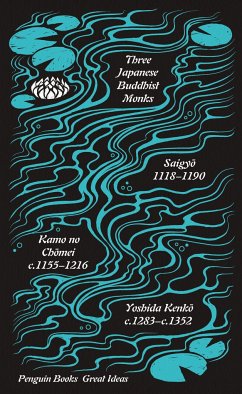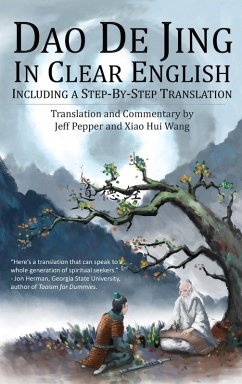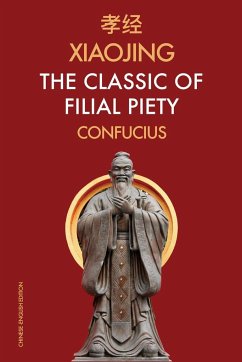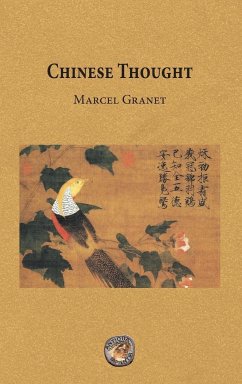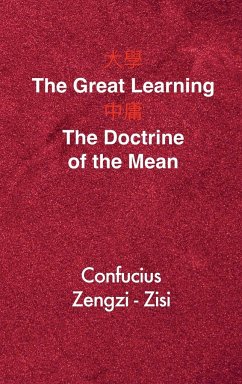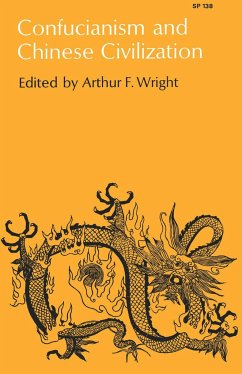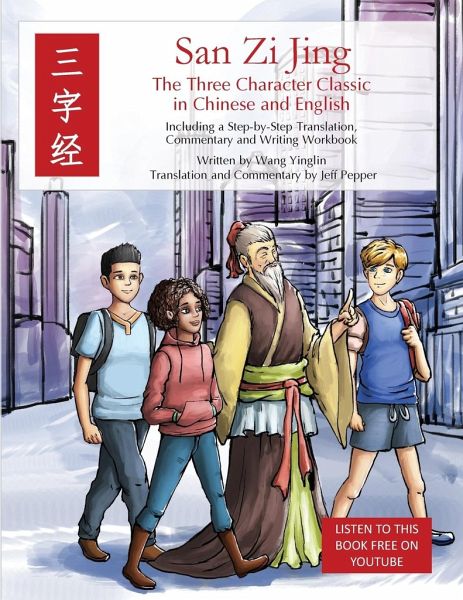
San Zi Jing - Three Character Classic in Chinese and English
Including a Step-by-Step Translation, English Commentary, and Writing Workbook
Versandkostenfrei!
Versandfertig in 1-2 Wochen
15,99 €
inkl. MwSt.

PAYBACK Punkte
8 °P sammeln!
Welcome to ¿¿¿, San Zi Jing, known in English as the Three Character Classic. The San Zi Jing was written by Wang Yinglin during the Song Dynasty in the 13th century, modified many times since then, and memorized by generations of Chinese students. It's a box of treasures, a puzzle within a puzzle, with layers of meaning waiting you to discover. At the simplest level, San Zi Jing is just a workbook, a way for you to learn how to read, speak and write Chinese. The book consists of 101 verses. Each verse is a set of four phrases of three characters each, for a total of 12 characters. Each cha...
Welcome to ¿¿¿, San Zi Jing, known in English as the Three Character Classic. The San Zi Jing was written by Wang Yinglin during the Song Dynasty in the 13th century, modified many times since then, and memorized by generations of Chinese students. It's a box of treasures, a puzzle within a puzzle, with layers of meaning waiting you to discover. At the simplest level, San Zi Jing is just a workbook, a way for you to learn how to read, speak and write Chinese. The book consists of 101 verses. Each verse is a set of four phrases of three characters each, for a total of 12 characters. Each character usually represents one word, you can think of each verse as a twelve-word poem. But since Classical Chinese is a much more compact language than English, the English version is always longer than twelve words. Inside this book, you'll see that the right-side pages are worksheets where you can practice copying the characters by hand, just as Chinese students have done for centuries, except that you'll probably be using a pencil or ballpoint pen instead of traditional ink and brush. If you run out of space and want to keep going, just grab a plain piece of paper and place it below the top line of printed characters. But the San Zi Jing is more than a workbook. It's is a grand tour of Chinese history. It starts off with brief stories about Confucian values and principles, then it shifts gears and takes us on a dizzying historical journey, starting with the legendary Yellow Emperor back in the misty beginnings of Chinese culture, and leading up to the end of the last dynasty. The verses are very short and extremely cryptic, so for each verse you'll see a short translation in contemporary English and also a hundred words (exactly!) of commentary that we've written to help you understand the verse. If you want to learn more, each verse has a QR code that you can use to read additional background information online. And finally, San Zi Jing is a window into the soul of China. Many of the verses provide bits of Confucian philosophy, or hint at stories told centuries ago. Even the historical verses in the middle of the book show us what life in China was like in the past, and give you a glimpse of how Chinese people see the world today. Read the San Zi Jing carefully, and you'll get a glimpse of what it's like to be Chinese. This translation is by Jeff Pepper, best-selling author of The Art of War and the Dao De Jing, and a series of easy-to-read story books based on Journey to the West. It's based on the original 800-year-old book generally believed to be written by the Chinese scholar Wang Yinglin.





